Production Year 2020
Blackout in Hokkaido ~Two Days for 5.3 Million People~
DC372015![]()
ブラックアウト ~530万人の2日間~ [HTB]
![]()
![]()
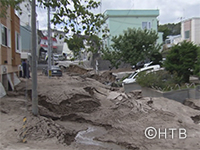
|Length : 25min |Year : 2020 |
On September 6th, 2018, Hokkaido was struck by the Eastern Iburi Earthquake.
After the earthquake, 2.95 million households lost their power in a blackout like never seen before.
Hokkaido fell into panic.
How did the citizens feel, and what did they do?
What did the citizens lack?
What did they want? How did they use social media?
Our reporting identified the reality of the citizens' lives, to find the issues that need to be tackled.
Ise Bay Typhoon 1959 Color and Memory
DC372016![]()
伊勢湾台風60年 色と記憶 [CBC]
![]()
![]()
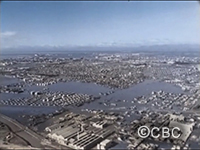
|Length : 50min |Year : 2020 |
Typhoon Ise Bay, which occurred on September 26, 1959, left 5,098 people dead or missing. Sixty years have passed since then.
In our coverage of the past, there is a common refrain among those who experienced the typhoon.
"The sky the next day was an abominable blue".
How did that blue sky look like?
This in mind led the journalist to make this documentary, a color version of the footage from that time.
What was that typhoon? What were the lessons to be learned from it?
“Bring Happiness to the World” A Miracle Song Born in Kobe
DC372017![]()
しあわせ運べるように阪神淡路大震災25年 ~神戸が生んだ奇跡の歌の物語~ [NHK]
![]()
![]()

|Length : 50min |Year : 2020 |
"Bring Happiness to the World" was written after the 1995 Great Hanshin-Awaji Earthquake in Kobe. "Strength no earthquake can defeat... We'll restore our wounded Kobe to be as it was." A rallying cry for hope in areas hit by natural disasters, it has been sung across Japan and in many other countries. People encouraged by its message have hailed it as a 'miracle' song. The former Yamakoshi village still sings it at memorial services. A children's choir based out of temporary housing in Kumamoto performs the song for others. Discover the extraordinary power of this 25-year-old song as it brings together disaster survivors around the world.
Battling a Radiation Emergency
DC372018![]()
ETV特集 誰が命を救うのか~医師たちの原発事故 [NHK]
![]()
![]()
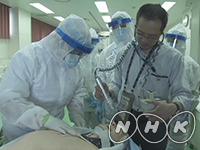
|Length : 59min |Year : 2020 |
Doctors break their silence on what happened at ground zero.
In the hours after Japan's 2011 Fukushima nuclear incident, medical specialists rushed to the scene. What they found was a region desperately ill equipped to handle an emergency of this magnitude. Local doctors initially hesitated, a result of the prevailing "Safety Myth." The national government was also blindsided, as confusion obfuscated the chain of command. Life and death decisions had to be made on the frontlines, from dealing with residents exposed to radiation, to treating injured members of Japan's Self-Defense Forces deployed to fight the explosion. The intense, overwhelming reality of medical care at ground zero is revealed through exclusive access to a vast, hitherto unseen collection of images and videos taken by the doctors themselves.
 Endless Wonders | Endless Wonders 2020
Endless Wonders | Endless Wonders 2020
ED322000![]()
ふしぎエンドレス 2020年度 [NHK]
![]()
![]()

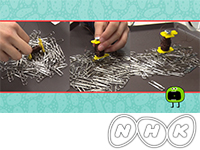
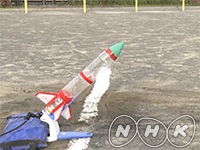

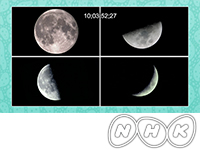
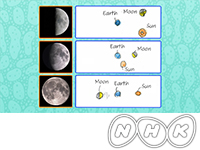
|Length : 10min. X6 |Year : 2020 |
(5th Grade How Do You Make an Electromagnet Stronger?)
When an electric current flows through an electromagnet with a wire wrapped around its iron core, it becomes a magnet. Now, how can we make it stronger? Do we make the iron core bigger? Do we change how we wrap the wire? Do we use a thicker wire? Let’s make predictions and think about how we will conduct the experiments.
(5th Grade Let's Improve the Electromagnet Experiment)
In the previous episode, the children thought about how they can make an electromagnet stronger and conducted experiments. Two groups predicted that “the more times an electromagnet is wrapped with wire, the stronger it gets” and did the same experiment using the exact same materials. However, the two groups saw different results. Why is this? When they do the experiment one more time, this time...
(5th Grade How to Do Researches)
A plastic bottle rocket that flies with the help of water and air. How can we make it fly farther? Do we pump in lots of air? Do we fill it with lots of water? Do we increase the angle of the launch pad? In order to check whether a prediction is correct, we need to experiment. But then, what are the important points we need to be careful about when doing the experiments? When checking how the amount of water affects the power of the rocket, what do we do with the amount of air?
(6th Grade How Does Water Reach the Leaves?)
Does water go up the stem like it does in a straw? Does it soak in like it does in a sponge? To check this, we cut the stem and observe very closely. What can we tell from what we see? We take it a step further and add color to the water to see where the water is passing. What do the schoolchildren say?
(6th Grade Why Does the Moon Change Shape?)
Are there multiple moons? Is it emitting light, or is it changing where it’s emitting light? Is light being shed on it from elsewhere? A crescent moon, a half moon, a full moon... We’ll take a good look at all kinds of moons through a telescope, observe the details, and narrow down the possibilities. What’s the conclusion?
(6th Grade How Does the Moon Change Shape?)
By looking at how the moon changes its shape and location in the sky every day, we predict that the positional relationship the moon has with the sun and earth has something to do with it all. We prepare a light that represents the sun and a ball that represents the moon to visualize the hypothesis. What’s the conclusion that we reach from the experiment?














